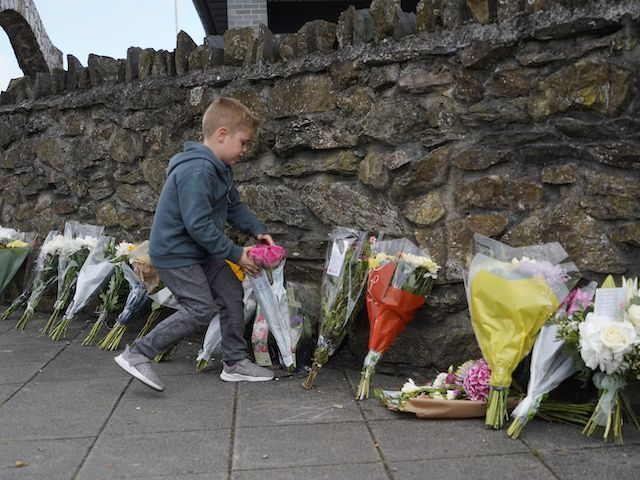Five people were killed in a mass shooting in Plymouth, United Kingdom, Thursday night despite the country’s stringent controls and licensing requirements.
Breitbart News noted that the alleged gunman, 22-year-old Jake Davison, reportedly took his own life before he could be apprehended.
The Washington Post reports that the attack began around 6 p.m. Thursday, moving location to location, shooting innocents as he went.
Police indicate there are “13 scenes” under investigation and “potentially more scenes.”
The United Kingdom has some of the most stringent gun controls in world, and those include myriad controls which the Biden administration is pushing in the United States.
University of Sydney’s GunPolicy.org describes the United Kingdom’s gun control as “restrictive.” The gun controls include a ban on “assault weapons.” Moreover, GunPolicy.org notes that “private possession of handguns (pistols and revolvers) is prohibited” as well.
Long guns can be owned, but a license must first be acquired, and the process for getting a license includes “a background check which considers criminal, mental health and addiction records.” Third party references are also required to get a license. And those seeking a license “are required to establish a genuine reason to possess a firearm.”
Firearm licenses must be renewed every five years.
The United Kingdom has a universal background check framework in place that requires a background check when buying from “a licensed gun dealer” and a check on private sales as well. The added stipulation in both situations is that the buyer possesses a license to own a gun in the first place.
License holders in the United Kingdom are only allowed to possess a certain number of firearms and “approved quantities of ammunition.”
In a 2014 column, Breitbart News explained the United Kingdom’s slide toward such restrictive measures began immediately after World War I and continued through the remainder of the 20th century:
Britain began placing restrictions on gun ownership after World War I with the Firearms Act of 1920. The passage of this act was emotionally driven, based in part on the public’s war-weariness and in part on the fear that an increased number of guns–guns from the battle field–would increase crime.
The Firearms Act of 1920 did not ban guns. Rather, it required that citizens who wanted a gun had to first obtain a certificate from the government. We see this same stage taking place in various places in the United States now, where a person who wants a firearm has to get a Fire Owner Identification Card (Illinois) or has to be vetted by police (Massachusetts) or both.
Thirteen years after the passage of the Firearms Act, British Parliament passed the Firearms and Imitation Firearms Bill, making the possession of a replica gun or a real one equally punishable unless the owner of either could show the lawful purpose for which he had it. (Sounds like California?) This was followed by the Firearms Act of 1937, which author Frank Miniter says “extended restrictions to shotguns and granted chief constables the power to add conditions to individual private firearm certificates.”
In the U.S., police departments in Massachusetts play the role Britain’s chief constables played and have final say on who can or can’t own a firearm. On July 25, Breitbart News reported that that Massachusetts police were pressing for “sole discretion” on who could own a long gun; they already had such discretion over who could own a handgun. On August 1, they received the power they sought.
Britain continued to issue firearm certificates as World War II set in. But by the time the war was over, the gun control mindset had permeated society to a point where self-defense was no longer a valid reason to secure a certificate for gun ownership.
Guns were simply for sport or for hunting.
In 1987, Michael Ryan shot and killed sixteen people in Hungerford, including his mother. He wounded fourteen others, then killed himself. According to the Library of Congress, Ryan used “lawfully owned” rifles to carry out the attack. Nevertheless, his attack prompted the passage of more laws in the form of the Firearms Act of 1988. This act “banned the possession of high-powered self loading rifles” and “burst-firing weapons,” and imposed “stricter standards for ownership” to secure a government certificate to own a shotgun.
In 1996, Thomas Hamilton walked into an elementary school in Dunblane, Scotland, and shot and killed “sixteen small children…and their teacher in the gym before killing himself.” He brought two rifles and four handguns to carry out the attack. All six guns were legally owned: Hamilton had fully complied with gun control statutes.
The Firearm Act of 1997 was passed while emotions ran high. The BBC noted that “Parliament banned all handguns and there is now a mandatory five-year jail sentence for possession.”
Certain long guns can still be acquired via the acquisition of a license, but getting the license is an onerous and time-consuming process.
A gunman killed five and shot several more in a “tragic incident” in Plymouth, Devon, before allegedly turning the gun on himself. https://t.co/5pnzUlCvtb
— Breitbart London (@BreitbartLondon) August 13, 2021
Police indicated the Davison, the alleged gunman who killed five innocents Thursday night, was a firearms license holder, which would mean he complied with myriad gun controls in order to allegedly carry out his heinous act.
AWR Hawkins is an award-winning Second Amendment columnist for Breitbart News and the writer/curator of Down Range with AWR Hawkins, a weekly newsletter focused on all things Second Amendment, also for Breitbart News. He is the political analyst for Armed American Radio. Follow him on Instagram: @awr_hawkins. Reach him at awrhawkins@breitbart.com. You can sign up to get Down Range at breitbart.com/downrange.

COMMENTS
Please let us know if you're having issues with commenting.